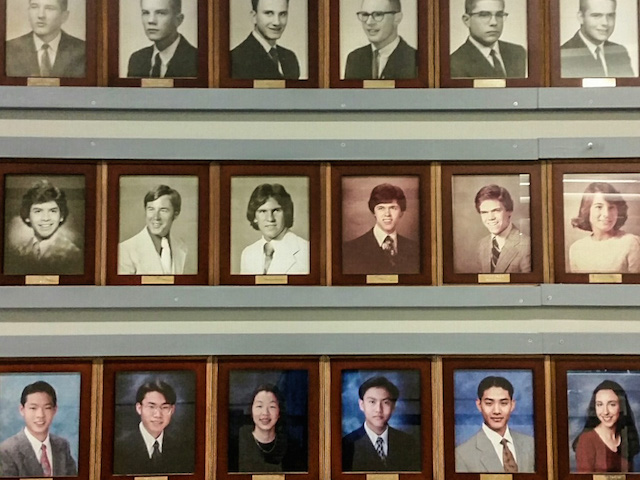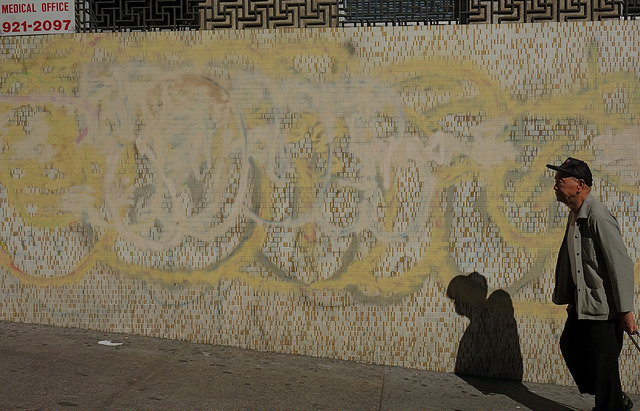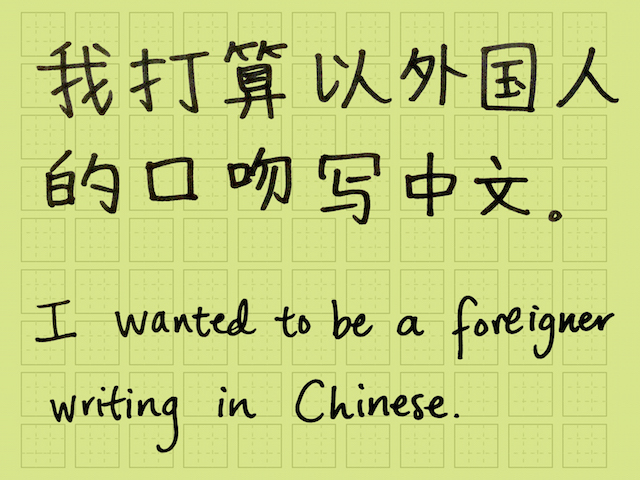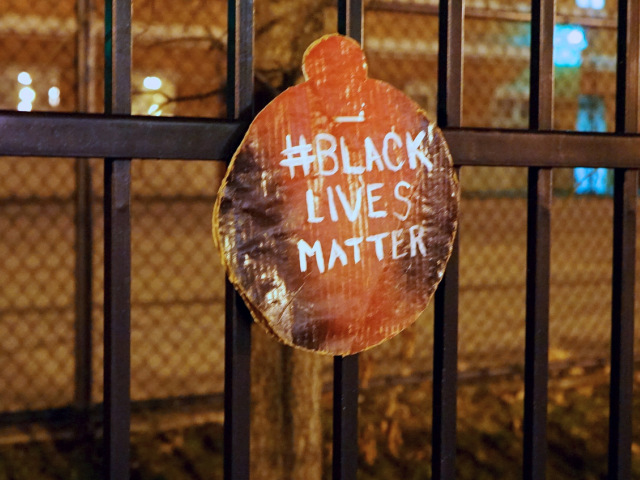Coming to terms with my mixed-race heritage as a kid in Southern California’s largest Asian enclave

August 31, 2016
In Arcadia, CA, weekends are the province of Asian-American overachievers. I know this because I was one of them. Sort of.
One Saturday afternoon in seventh grade, a bunch of us gathered at a classmate’s house to work on our project for the Odyssey of the Mind competition. All of us were Chinese. People chatted casually about homework sets in their advanced math classes or complained about having to go to Chinese school instead of watching Saturday-morning cartoons. I liked being in on these teenage grievances even though they weren’t my own.
On that particular Saturday, a joke was made in Mandarin. But I didn’t speak the language and the joke was lost on me. In the wake of my classmates’ raucous laughter I felt acutely aware of my difference.
Something welled up inside my throat. All of a sudden I felt a burning urgency to stake a claim, to assert that I was one of them, that I too belonged in this group. “Hey guys, I’m Chinese too,” I ventured. A classmate who carpooled with my family was quick to counter, “Katie, that doesn’t count.”
He was right—at least that’s what I believed at the time, and I felt ashamed for trying to play myself off as more than the sum of my parts.
I’m biracial. A mutt. Half one thing, half something else. Hapa. Eurasian. The best of both worlds. I prefer to simply say I’m mixed. But in this day and age, who isn’t?
Being racially ambiguous is sometimes like being a blank canvas. Depending on the location, venue, and person, I’ve been mistaken for Mexican, French, Jewish, Afghani, Italian, Uighur, German, Russian, Turkish, and Korean. In the United States, I blend in with the majority, which by default is white. Sometimes other halfies can’t even tell that I’m mixed. So I’ve gotten used to breaking the news to new acquaintances. I try to rip that band-aid off as quickly as possible. “My mom is Chinese,” I explain. I phrase it this way because it’s an easier, less dissonant truth to swallow. The idea that I have a Chinese mother seems plausible; only later do they realize that if she’s Chinese, some part of me must be too.
It’s a circular way of explaining who I am. I know. And I love being mixed. I would never choose one side of my heritage over the other. I am absolutely both. But there is only so much skepticism I can respond to—“Wait, you’re Chinese? Really? Wow. You don’t look it at all.”
I’ve had people laugh in my face, thinking it’s a hilarious joke. I’ve had a blond, blue-eyed Swede (who also happened to be hitting on my Chinese American bestie) tell me that he’s more Asian than I am because he grew up in Singapore. These little slights hurt me more than I like to admit. My racial identity has become my biggest insecurity because I so often have to defend it.
I know what you’re thinking, though. My predicament is really not that bad. I have a free pass to walk the earth as if I were a privileged white woman in a white world, right? I don’t even have to try to pass.
But no one is born into a vacuum. So many parts of our identities are tied up with where we grew up. Place can have an enormous influence in forming the person we become. I can’t imagine who I might have been if I hadn’t grown up in the 626, the area code that has become synonymous with Southern California’s largest Asian enclave.
Nestled in the mountains of the San Gabriel Valley lies the suburb of Arcadia, 30 minutes from Downtown L.A. and an hour from the beach. I remember doing research on the city’s history for a school report in 4th grade and seeing it described as a “sleepy bedroom community,” which is still true for the most part—the biggest nuisance residents are likely to encounter is the dirge of the wild peacocks that roam the city, vestiges of when “Lucky” Baldwin, the ranchero who founded the city in 1903, travelled back from India with a few dozen of the birds.
It was a great place to grow up in the mid-1990s, especially if you liked playing make-believe in ample backyards, biking to your friends’ houses after school, and spending every weekend at a sleepover like I did. Arcadia’s only claim to fame circa 1995 was the Santa Anita Racetrack (home of Sea Biscuit), our giant mall, and the Los Angeles County Arboretum where Hollywood productions would occasionally film scenes for such movies as Anaconda, Matilda, and Back to the Future (the DeLorean first rocketed into the future in the parking lot outside the Robinsons-May).
When my mom bought her house in Arcadia in 1972 for what could pass for pocket change today, she was literally the only Chinese person for blocks, if not miles.1 Safe, affluent, and well-manicured, the city has always had an all-American sheen to it.2 And like most all-American suburbs, Arcadia was predominantly white.
Jack Kerouac noted as much in On the Road when the protagonist, Sal, and his Mexican gal find themselves stranded there:
We stood under a roadlamp, thumbing, when suddenly cars full of young kids roared by with streamers flying. “Yaah! Yaah! We won! We won!” they all shouted. I hated every one of them. Who did they think they were, yaahing at somebody on the road just because they were little high-school punks and their parents carved the roast beef on Sunday afternoons?
Like many cities in the United States that began experiencing demographic shifts in the 20th century that brought white residents into contact with other races and immigrant populations, Arcadia tried to maintain its whiteness for as long as possible by instituting policies such as exclusionary covenants and other racist tactics to keep non-whites out.3 In 1974, for example, my mom applied for a job in Arcadia’s clerk’s office. At the time, she was in court-reporting school and figured that her ability to write 85 words per minute in shorthand would make her an attractive candidate. She went in person to apply for the job and was asked to take a short test. I never quite believed my mom when she told this story to me as a kid because I hadn’t yet experienced racism up close and personal, the kind that’s shrouded in fake politeness. But it did happen.
The test, she explained, was perplexing because it didn’t ask her any questions relevant to the job or about her qualifications. Instead, it quizzed her on proverbs and clichés. From a list of multiple-choice answers, she was supposed to select the correct meaning for a cliché like: “Every dog has its day.” Not having grown up with native English speakers who were culturally fluent, she had no way of knowing the correct answers. Needless to say, she didn’t get the job and never heard back from them again (though years later she would quiz us on common clichés in the backseat of our beat-up Aerostar during family road trips).
But time and tide wait for no man. (Cliché intended.) Something changed in the mid 1980s and 90s. Chinese families from Taiwan, who were relatively well-off, started buying up the old ranch houses in Arcadia, bulldozing them, and building cavernous, two-story monster-homes in their stead.4 The Asian population seemed to double overnight. My mom recalls driving around town one day in the early 80s with my older brother, when they pulled up to a four-way stop and she suddenly realized that all of the drivers staring back at her were Asian. My brother, who was only a teenager then, turned to my mom and deadpanned, “Welcome to the Twilight Zone.”
By the time I entered high school in 1999, the city’s population was nearly 45 percent Asian and primarily Chinese within that subset. It was like a switch had flipped. One thing has always perfectly illustrated this: hanging on the wall in the high school’s administration office were pictures of all the previous class presidents dating back to 1952. Anyone who viewed them would be at pains not to notice the jarring shift from white, white, white to Asian, Asian, Asian.
The shift registered a change in me on a subconscious level too. As a little girl obsessed with Barbies and dressing up in ’80s prom dresses from Goodwill, I remember looking in the mirror and often wishing that I had the red hair and blue-green eyes to match the features of my Irish heritage on my dad’s side. Eventually, I discovered a new yearning. Instead of spritzing my hair with lemon juice so that the sun could bring out the red in it, I was squinting and pulling at the corners of my eyes, examining my nearly-black hair under the light, searching for some sign of definitive Chinese-ness.
Practically, what this meant for me was that I was very often seen as the white minority in my honors-track classes. In sixth grade, my pre-algebra class had 1.5 white people in it: me and the teacher. I’m almost certain I had the worst grades in that class, by which, of course, I mean a B+. When Facebook launched during my freshman year of college, one of the groups that gained popular traction was “I went to a public high school, bitch!” I joined “I went to an Asian high school, bitch!”
I tell people all of these things not to complain (achievement culture aside, I enjoyed going to an Asian high school), but to give them the context of where I came from. Most people look at me and see a white girl. They don’t know that I grew up eating dim sum, that my Grandma still sends me red envelopes every Chinese New Year, or that I’ve spent the majority of my life surrounded by Asians.
I didn’t consciously think about my racial identity back then. If the word “interracial” was a part of my vocabulary at thirteen, I never thought it had anything to do with me. I just knew that I came from two very special ethnic heritages, which my mom made a dutiful effort to celebrate every year. For Chinese New Year, we dressed up in our silk cheongsams and ate dim sum with my grandparents at Empress Pavilion in Chinatown. On St. Patrick’s Day, we wore green and ate corned beef and cabbage for dinner (bless her for thinking this was a meal worth celebrating!).
Occasionally on vacations or trips outside the confines of L.A.’s diversity, people would stare at our family or make unwitting comments that betrayed their general confusion over how we all fit together. I have enough of those stories to fill a chapbook. Take for instance, the redheaded boy on our ferry to Dublin who exclaimed to his parents’ red-faced chagrin, “Look, mom, a Japanese!” Or the time the woman taking our picture at Seattle’s Fremont Troll thought my dad was some pervert who kept sneaking into the frame. We still love entertaining people with these anecdotes. They are the stories that fortify our own special club of a family, humorous reminders of how the clueless outsiders aren’t in on our joke.
But the bubble of childhood, that perfect, shiny world where innocence makes us think we all really can just get along, only extends so far. Mine burst that Saturday afternoon in seventh grade. It’s the thing that was said to me that I can’t seem to forget.
Katie, you don’t count.
How those words echo in my ears even today.
Anyone who has ever been in the minority (small m) knows that the sting of exclusion cuts deep. I’d be lying if I said it didn’t hurt even now, 18 years after the fact. Because those words confirmed my deepest fear: that I wasn’t really Chinese and had no right to claim that identity. I was a fraud who would never get the punchline or be spoken to in confidence because I simply wouldn’t understand. Being half of something was almost worse than nothing.
I silently vowed that no one would ever be able to say that to me again. In college, I learned Mandarin five days a week for three years. I studied abroad and worked in China for nine months. I mastered the art of blending in like a xiaomei, wearing fake designer sunglasses and carrying an umbrella to block out the smog-soaked sun. A Singaporean friend taught me the correct way to hold a pair of chopsticks and soon locals were telling me I had better etiquette than them. I memorized Jay Chou ballads so that everyone would know who the hunxie with major C-pop skills at KTV was.
I thought that by doing all of these things, by “becoming” more Chinese, I would have the irrefutable evidence I needed to debunk any claims to the contrary. Tell me again how I don’t count after I ream you out in Mandarin.
However, life twists in strange ways. I had donned the cultural guise of what it means to be Chinese and performed the act so well that people began to believe I was more Asian than white. This left me feeling hollow. I couldn’t help but think that the people who fully embraced my recast Chinese identity were also getting it wrong. They had bought into the idea that there’s only one way to be Chinese or Italian or Puerto Rican. And so had I.
In “You & The 6,” Drake sings, “I used to get teased for being black / And now I’m here and I’m not black enough.” The trick is not to let them tell you who they think you are.
As an adult, outside the confines of Arcadia, I’ve realized that I have to reassert who I am over and over again. I struggle with the fact that such an essential part of me is invisible to everyone else. Dating, networking, making friends or starting new jobs are all occasions that require me to explain, when the time is right, that I’m not who you think I am. Gatherings involving Asian Americans make me anxious because I want to attend but there is always the lingering fear that people will wonder what the white girl is doing there.
Now when I go back to Arcadia the city is more Asian than ever. Estimates from 2014 put the population at 59.9% Asian and 25.4% white, with the remaining 14% split between Latino, black, and mixed race. The city has not been without its growing pains, but like former mayor Jim Helms wrote in a recent op-ed, “We Old Arcadians are so fortunate that these newcomers chose to invest in Arcadia…In a very few years the people who want Arcadia to remain as it was years ago, they themselves will become history.”
Our new neighbors have invigorated this sleepy suburb into a hub of Asian culture. Social influencers like the Fung Bros put the 626 on the map and made it cool to be boba-drinking, rice-rocket-driving AZNs. There is always a line at Din Tai Fung, which has become a mecca for foodies seeking the best xiaolongbao in L.A., and whenever I visit from New York, I make sure to hit up Sinbala for the lap cheong and Taiwanese-style baobing that only they seem to get right.
Over the years I’ve come to realize that most of us, at our core, just want to belong. I’m not the only one who struggles with this slippery, ever-changing thing we call identity. Not by far. My mom, who was born here, feels self-conscious around Chinese neighbors and friends because she doesn’t know the language and didn’t learn the culture’s traditions as a kid. My grandma grew up in a Taishanese village in Guangdong Province, but she rarely speaks Cantonese anymore because her village dialect sounds coarse in comparison to the refined Cantonese of Hong Kongers. One of my best friends has told me stories of growing up Chinese on Staten Island and how she believed the other kids when they told her she was ugly because no one else looked like her.
In 1923, a 21-year-old Langston Hughes, who would later become the rallying voice of the Harlem Renaissance, found work on a ship and sailed to Africa hoping to set his eyes on “The real thing, to be touched and seen, not merely read about in a book.” While he was discovering the motherland, a place where he imagined he would finally fit in, the Africans were also sizing him up. Hughes told them in a gesture of solidarity that he too was a “negro” just like them:
But they only laughed at me and shook their heads and said: “You, white man! You, white man!”
It was the only place in the world where I’ve ever been called a white man. They looked at my copper-brown skin and straight black hair—like my grandmother’s Indian hair, except a little curly—and they said: “You—white man.”
“But I am not white,” I said.
“You are not black either,” The Kru man said simply.5
We will always fall short when we look to others to validate our identities. Who else can say who we are except the person staring back at us in the mirror? So I will tell you who I am because it is my story to tell. I am half Chinese, half Irish, mixed and proud. I am the daughter of an interracial couple who has been happily married for 33 years. I am from the 626 and yes, I went to an Asian high school, bitch. I am the descendant of people who survived the potato famine in Ireland and the Japanese occupation in China. I am all-American and no, I don’t have blonde hair or blue eyes. I am, as TIME Magazine declared in 1993, the new face of America and you might have a baby that looks like me one day. I am the 6.9 percent of the population that refuses to check the “other” box. I am not either/or, I am all of the above and then some. I am. I am. I am.
1 In fact, my grandparents, who owned a house in Highland Park that their family was quickly outgrowing, looked into moving to Arcadia in the 1960s. However, they decided against it after they heard that an Asian doctor who had recently moved to the city had his trash cans set on fire.
2 Bloomberg Businessweek named Arcadia the best place to raise your kids in the U.S. in 2009 and 2010.
3 Bloomberg: “For almost a century after its founding in 1903, Arcadia was white and conservative. In the late 1930s more than 90 percent of the city’s property owners signed agreements, circulated by the Chamber of Commerce, to sell only to white buyers. Its Santa Anita racetrack held about 19,000 Japanese Americans as they were relocated to internment camps during World War II.”
4 Bloomberg: “In the early 1980s an influx of immigrants from Taiwan arrived, drawn in large part to the great public schools. A second wave came from Hong Kong after the 1989 Tiananmen Square protests. The city’s Asian population grew from 4 percent in 1980 to 59 percent in 2010. There were tensions at first—a letter in a local newspaper praised a proposed ban on non-English storefronts, writing, ‘Please leave your Asian signs in the old country and get Americanized.’”
5 From The Big Sea: An Autobiography by Langston Hughes, 1940, p.102-103. Copyright 1940 by Langston Hughes.



